Length 16 m First flight September 13, 1978 | Wingspan 16 m Number of seats 24 | |
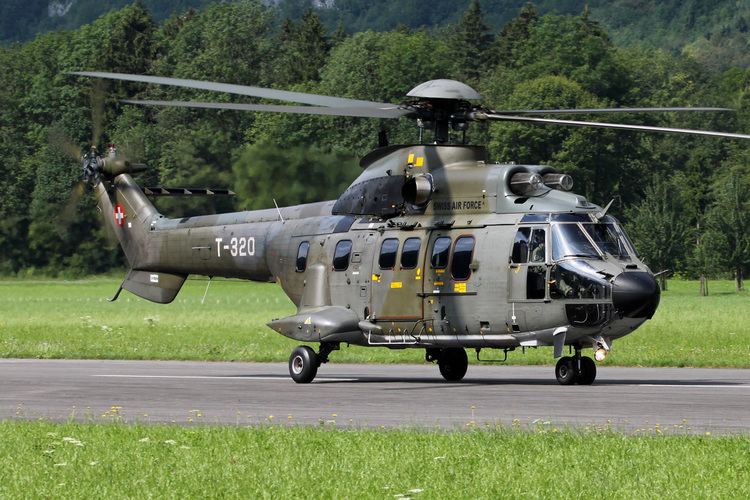 | ||
Unit cost 15,500,000–15,500,000 USD (2006) Manufacturers Airbus Helicopters, Indonesian Aerospace, Aérospatiale | ||
Eurocopter as332 super puma sessellift montage am wurmberg
The Eurocopter AS332 Super Puma (now Airbus Helicopters H215) is a four-bladed, twin-engine, medium-size utility helicopter developed and marketed by Aérospatiale and Eurocopter (now Airbus Helicopters). It is an enlarged and re-engined version of the original Aérospatiale SA 330 Puma. First flying in 1978, the Super Puma succeeded the SA 330 Puma as the main production model of the type in 1980; since 1990, Super Pumas in military service have been marketed under the AS532 Cougar designation. In civilian service, a next generation successor to the AS 332 was introduced in 2004, the further-enlarged Eurocopter EC225 Super Puma.
Contents
- Eurocopter as332 super puma sessellift montage am wurmberg
- Eurocopter as332 super puma
- Origins
- Production and improvements
- Design
- Operational history
- Variants
- Civilian
- Military
- Former operators
- Notable accidents and incidents
- Specifications AS332 L1
- References

Eurocopter as332 super puma
Origins
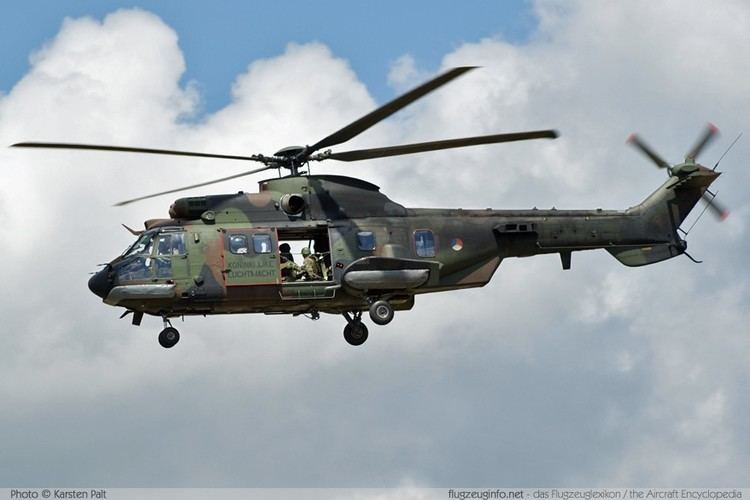
In 1974, Aérospatiale commenced development of a new medium transport helicopter based on its SA 330 Puma. The project was publicly announced at the 1975 Paris Air Show. While the new design maintained a similar generator layout to the preceding AS 330, it was powered by two of the new and more powerful Turbomeca Makila turboshaft engines, which drove a four-bladed main rotor which made use of composite materials. A great level of attention was paid to making the new model withstand damage better; a more robust fuselage structure was adopted along with a new crashworthy undercarriage, the rotor blades are also able to withstand a level of battle damage, as are the other key mechanical systems across the rotorcraft.

External distinguishing features from the SA 330 include a ventral fin underneath the tail boom and a more streamlined nose. From the onset, the new rotorcraft was planned to be available with two fuselage lengths; these were a short fuselage version that offered a similar capacity to the SA 330 while providing superior performance under "hot and high" conditions, and a stretched version which allowed for more internal cargo or passengers to be carried in circumstances where aircraft weight was less critical.
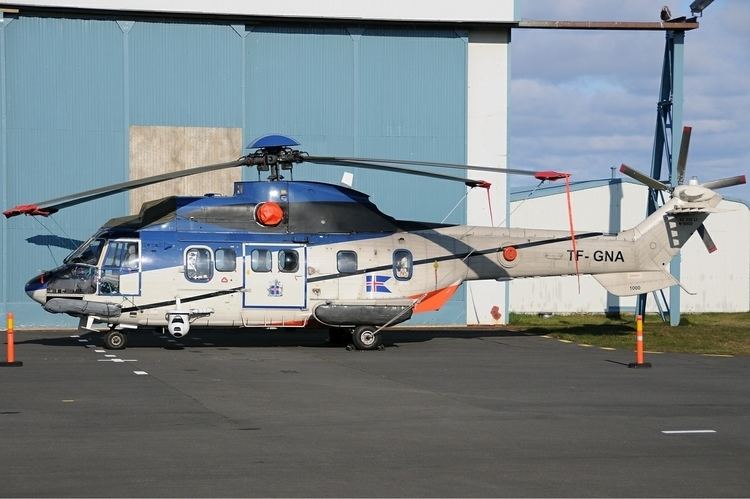
A pre-production prototype, the SA 331, modified from a SA 330 airframe with Makila engines and a new gearbox, flew on 5 September 1977. The first prototype of the full Super Puma made its maiden flight on 13 September 1978, being followed by a further five prototypes. Flight testing revealed that, in comparison with the SA 330 Puma, the AS 330 Super Puma had a higher cruise speed and range, in part due to the Makila engine having a greater power output and a 17% reduction in fuel consumption per mile; the Super Puma also demonstrated far superior flight stabilisation tendencies and was less reliant on automated corrective systems. The development of the military and civil variants was carried out in parallel, including the certification process. In 1981, the first civil Super Puma was delivered.
Production and improvements
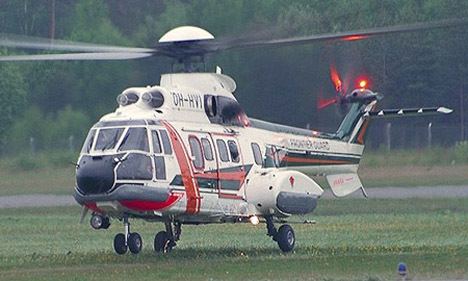
In 1980, the AS 332 Super Puma had replaced the older SA 330 Puma as Aerospatiale's primary utility helicopter. The AS 332 Super Puma proved to be highly popular; between July 1981 and April 1987, there was an average production rate of three helicopters per month being built for customers, both military and civil. Indonesian Aerospace (IPTN) has also manufactured both the SA 330 and AS 332 under license from Aerospatiale for domestic and some overseas customers. By 2005, various models of Super Puma had been in operation with customers across 38 nations for a wide variety of purposes; in total, 565 Super Pumas (including military-orientated Cougars) had been delivered or were on order at this point as well.

The success of the AS 332 Super Puma led to the pursuit of extended development programs to produce further advanced models; features included lengthened rotor blades, more powerful engines and gearboxes, increases in takeoff weight, and modernised avionics. A wide variety of specialised Super Puma variants followed the basic transport model into use, including dedicated Search and rescue (SAR) and Anti-submarine warfare (ASW) versions. Military Super Pumas have been marketed as the AS532 Cougar since 1990. As a fallback option to the NHIndustries NH90, a Mark III Super Puma was also considered for development.
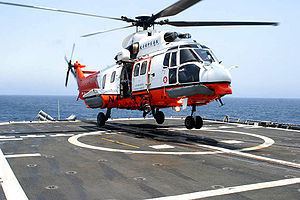
In February 2012, Eurocopter offered a lower cost basic Super Puma configuration in order to better compete with the Russian-built Mil Mi-17; Starlite Aviation became the launch customer for this new variant, designated AS 332 C1e. In November 2015, Airbus Helicopters announced that manufacturing activity of the AS 332 Super Puma, which was redesignated as the H215 at that point, would be transferred to a new purpose-built final assembly facility in Brasov, Romania. This move is aimed to cut production time and cost by simplifying production to a single baseline configuration that shall then be customised to meet the needs of both civil and military customers.
Design
The AS332 Super Puma is powered by a pair of Turbomeca Makila 1A1 turboshaft engines which drive the rotorcraft's four-bladed main rotor and five-bladed tail rotor as well two separate hydraulic systems and a pair of electrical alternators. Fuel is housed in six internal fuel tanks, additional auxiliary and external tanks can be equipped for extended flight endurance; for safety, the fuel tanks use a crashworthy plumbing design and fire detection and suppression systems are installed in the engine bay. The monocoque tail boom is fitted with tail rotor strike protection, the forward portion of the boom accommodated a luggage compartment. The retractable tricycle landing gear is designed for high energy absorption qualities.
The main cabin of the Super Puma, which is accessed via two sliding plug doors, used a reconfigurable floor arrangement, various passenger seating or cargo configurations can be adopted, including specialised configurations for medical operators. According to Airbus Helicopters, in addition to the two pilots, the short-fuselage AS332 can accommodate up to 15 passengers while the stretched-fuselage AS332 increases this to 20 passengers in a comfortable configuration; soundproof upholstery is installed, as is separately-adjustable heating and ventilation systems. Along with the doors, 12 windows around the main cabin area are jettisonable for emergency exits; the lower fuselage can also be fitted with floatation gear. A hatch in the floor to access the cargo sling pole is present in the cabin, as is individual stowage space for airborne equipment.
The flight control system of the Super Puma uses a total of 4 dual-body servo units for pitch control of the cyclic, collective, and tail rotor; a duplex digital autopilot is also incorporated. The cockpit is equipped with dual flight controls; principle instrumentation constitutes of four multifunction liquid crystal displays along with two display and autopilot control panels; for redundancy, a single Integrated Standby Instrument System (ISIS) and Vehicle Monitoring System (VMS) are also fitted. According to Airbus Helicopters, the avionics installed upon later variants has ensured a high level of operational safety. Third party firms have offered various upgrades for the Super Puma, these have included integrated flight management systems, global positioning systems (GPS) receivers, a digital map display, flight data recorders, an anti-collision warning system, Night Vision Goggles-compatibility, and multiple radios.
A navalised variant of the Super Puma has also been manufactured for performing anti-submarine warfare and anti-surface warfare missions. In such a configuration, the Super Puma is modified with additional corrosion protection, a folding tail rotor boom, a deck-landing guidance system, sonar equipment, and the nose-mounted Omera search radar. For the anti-surface role, it can be armed with a pair of Exocet anti-ship missiles.
Operational history
VH-34 is the Brazilian Air Force's designation for the helicopter used to transport the President of Brazil. Two modified Super Pumas were used as the main presidential helicopters, having been configured to carry up to fifteen passengers and three crew members. The VH-34 model was progressively supplemented and later replaced by the VH-36, the later EC725. Various French presidents, such as François Mitterrand, have used military Super Pumas as an official transport during diplomatic missions. In 2008, British Prime Minister Gordon Brown was flown in a Super Puma during a tour of Iraq.
In August 1983, the French government created a new reactionary taskforce, the Force d'Action Rapide, to support France's allies as well as to contribute to France's overseas engagements in Africa and the Middle East; up to 30 Super Pumas were assigned to the taskforce. In June 1994, France staged a military intervention in the ongoing Rwandan Genocide, dispatching a military task force to neighboring Zaire; Super Pumas provided the bulk of the task force's rotary lift capability, transporting French troops and equipment during their advance into Rwanda.
By 2015, 187 Super Pumas had been reportedly ordered by military customers; amongst others, the orders included 29 for Argentina, 30 for Spain, 33 for Indonesia, 22 for Singapore and 12 for Greece.
During the 1980s, the French Army were interested in mounting an airborne battlefield surveillance radar upon the Super Puma. The first prototype Orchidée was assembled at Aerospatiale's Marignane factory and began testing in late 1988; the French Army intended to procure 20 aircraft to equip two squadrons. Orchidée was described as having a pulse-Doppler radar mounted on the fuselage's underside, being capable of 360-degree scanning to detect low flying helicopters and ground vehicles at ranges of up to 150 km; gathered data was to be relayed in real time to mobile ground stations via a single-channel data link for processing and analysis before being transmitted to battlefield commanders. The system was said to be capable of all-weather operation, and would feature protection against counteracting hostile electronic countermeasures. However, development was aborted in mid-1990 during post-Cold War defence spending reductions.
Various nations deployed Super Pumas to the Afghan theatre during the War in Afghanistan. Between 2005 and 2011, Spanish Super Pumas were the sole type providing combat search and rescue (CSAR) and MEDEVAC cover in Afghanistan's western regions, the last of these were withdrawn in November 2013.
In late 1990s Hellenic Air Force (HAF) issued a request for acquiring modern and more capable SAR helicopters in order to replace its ageing fleet of Agusta Bell AB-205 SAR helicopters, which were in use since 1975. The need for an all-weather, day and night, long range SAR helicopter for operations throughout the Athens FIR came up after the Imia/Kardak incident of 1996 and the growing tension between Greece and Turkey over territorial water disputes on the Aegean Sea. The Greek government, signed a deal with Eurocopter in 1998 for purchasing initially 4 AS-332 C1 Super Pumas. H.A.F. acquired 2 more Super Pumas for air support operations of the Athens 2004 Olympic Games and 6 more helicopters followed up in the period 2007–2011 for the new CSAR role of the 384 SAR/CSAR Sq. All HAF helicopters are of the C1 version, including a 4-axis auto pilot, a NADIR type1000 navigation and mission management computer, FLIR turrets, an RBR1500B search radar, an engine anti-icing system, a hydraulic and an electrical hoist, a SPECTROLAB SX-16 searchlight, engine exhaust gas deflectors, a Bertin loudspeaker and 6 stretcher interior configuration for MEDEVAC missions.
In 1990, Nigeria made a deal with Aerospatiale to exchange several of their Pumas for larger Super Pumas. In November 2009, an additional five used Super Pumas from France for peacekeeping and surveillance operations in the Niger Delta. In 2015, it was reported that a number of weaponised Super Pumas had been procured by the Nigerian Air Force for anti-insurgency operations against Boko Haram.
The Super Puma has reportedly proven to be well-suited to off-shore operations for the North Sea oil industry, where the type has been used to ferry personnel and equipment to and from oil platforms. One of the biggest civil operators of the Super Puma is Bristow Helicopters, who had a fleet of at least 30 Super Pumas in 2005; CHC Helicopters is another large civil operator, having possessed a fleet of 56 Super Pumas in 2014. During the 1990s, Iran procured at least seven Indonesian-built Super Pumas for civil offshore oil exploration missions.
In 2014, Airbus Helicopters, the manufacturer of the type, declared that the Super Puma/Cougar family had accumulated a total of 890 delivered rotorcraft to customers across 56 nations.
Variants
Civilian
Military
Former operators
Notable accidents and incidents
Specifications (AS332 L1)
Data from Jane's All The World's Aircraft 1993–94
General characteristics
Performance
